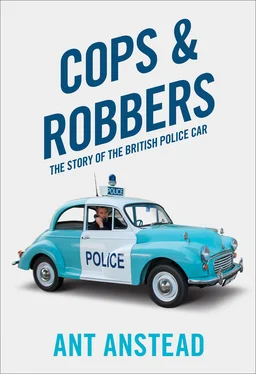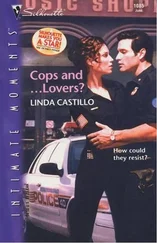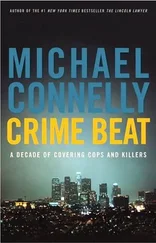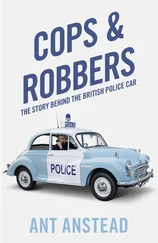What the government did was bring in the Road Traffic Act 1930, the first paragraph of which read:
‘An Act to make provision for the regulation of traffic on roads and of motor vehicles and otherwise with respect to roads and vehicles thereon, to make provision for the protection of third parties against risks arising out of the use of motor vehicles and in connection with such protection to amend the Assurance Companies Act, 1909, to amend the law with respect to the powers of local authorities to provide public service vehicles, and for other purposes connected with the matters aforesaid.’
[1 August 1930.]
The Act required all police forces to institute motor patrols to improve driving behaviour by example, advice and ultimately legal sanctions and prosecution. There was a budget for this which was initially quite small, and because of this motorcycle combinations were often the chosen vehicle for such patrols. However, accidents proved this to be an unwise choice and they were quickly phased out of mass use in favour of cars. Some three-wheelers, especially the BSA, which, like the Morgan had two wheelers, at the front and was thus reasonably stable, were quite popular in various police forces for a short while after they were launched in 1929, until four-wheel cars came down to their price point and higher speeds made officers ‘nervous’. These patrols naturally became engaged in other activities – preventing crime and dealing with emergency situations – and the line of the responsibilities became blurred. Judged on immediate results, the Act has to be looked at as a failure, for Britain’s worst ever year for road casualties was 1934 when there were 7,343 deaths and 231,603 injuries recorded. However, in hindsight it was actually a very far-sighted and prescient piece of legislation that built on Britain’s reputation for policing by consent and sought to educate the public into safer behaviour and only punished them if they really refused to come into line. I think it’s important here to underline just how different the prevailing attitude to risk was in this era compared to what is, today, sometimes disparagingly called our health and safety nonsense. These modern regulations are a good thing, despite the press they sometimes get, because they actually make us think about risks and encourage us to take steps to minimise them – that can be anything from making sure your car has good brakes and tyres to putting your seatbelt on. In the 1930s these sensible steps evoked a society-wide mocking and were largely seen as not making any difference; but hey, smoking was good for you then as well …
Health and safety in racing
Oddly, motorsport has a very important role in changing this attitude and creating society-wide acceptance of the concept of risk management that gained social traction during the 1970s. Even in the 1960s, when Jackie Stewart started seriously to question why racetracks had trees on the side that would kill you if you skidded off and hit one, he was greeted by derisory calls of ‘coward’ from drivers and racing journalists alike, who, having recently fought in a war, even said things like ‘this is safe, at least no one is shooting at us’. Jackie had thought it through, though; he was getting paid for his skill and courage, not to take what he quite rightly considered to be stupid pointless risks. After all, the racing and skill needed were the same whether the circuit had safe (ish) barriers or very dangerous trees. Jackie blew every other driver away on a wet Nürburgring and won three World Championships, so no one could credibly call him a coward, but it took a long time for that seemingly utterly sensible piece of thinking to become the societal norm. Jackie undoubtedly has a place in the history books for his racing achievements as one of the greats; however, it’s his innovative thinking, which has became so mainstream as to seem obvious now but was revolutionary in the 1960s, and his tireless work on safety that are by far his biggest contributions to both motor sport and the world as a whole. His work had a massive impact on us all in one way or another. However, it’s arguable that the government’s determination to save us from ourselves when it came to motoring started with the Road Traffic Act 1930, and you could, thus, call it the very glimmer of health and safety culture.
Like so many other motoring firsts, the first ever driving test was taken in France, under the Paris Police Ordinance of 14 August 1893. It was introduced on a voluntary basis in Britain on 13 March 1935 but did not become official in Great Britain until 1 April 1935, and was not compulsory until 1 June 1935. The first driving test pass certificate in the UK was awarded on 16 March 1935 to the rather ironically named Mr R.E.L. Beere of Kensington.
As the Road Traffic Act came into effect, the UK police were becoming a motorised force and one major development was in its fledgling stages, which would totally change policing and the way in which the police used vehicles. The technology was called … radio.
Radio was first used by the British police in 1923. Again, the Crossleys enter our story here because the very first radio experiments were conducted using these cars with hilariously large bedstead-type aerials fitted. Nottingham and Lancashire Police were also at the forefront of this, only a year after the Met.
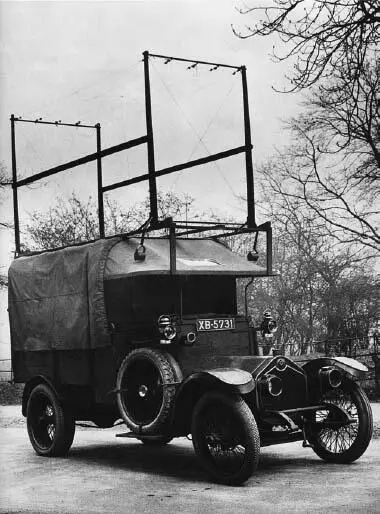
The introduction of police boxes had shown that communication was key to keeping pace with faster society, so it was logical that the next move should be radio. However, in the 1920s talking radio was not yet available; instead, police vehicles used Morse code radio telegraph. There were plenty of (mainly) men around in this era who understood this because it had been taught in the military, so that was the basis of the system fitted to cars. Its reflection of the change in health and safety culture is very evident. Today you are, quite rightly, not allowed to drive even an automatic car with a small mobile phone. These police drivers were expected to drive a car with a crash gearbox while tapping out a Morse code message, listening and translating while wearing a headset. The job of radio operator soon became the norm as the equipment was moved to the back seat.
World War I and the telegraph
World War I was the engine of much technological change, including wireless telegraphy, which used Morse code, and later what was then called radio telephony, which transmitted a voice. Both were refined and made more secure during the conflict, while radio communication took great leaps forward. Telegraphy was famously used by two-seater planes doing artillery observation (known as art-obs) above the trenches, where they tracked troop movements in order to improve the aim of their side’s own gunners if they were firing beyond the line of sight, by giving signals to the aimers to shoot slightly to one side, further or less far. This was a fluid operation, as wind conditions changed almost minute by minute, so having instant updates was important. The early planes in question had a long aerial hanging underneath them which was wound in and out on a drum so they did not drag it along when flying to and from the observation area. The industrial production of radio valves made telephony a practical proposition, however, and in 1916 the Royal Flying Corps started developing this, which meant that planes could tell ground stations where shells were landing by voice rather than coded message. In this embryonic stage this was a one-way signal; those manning the ground station would raise a flag to show they could hear. By 1918, the British had mastered plane-to-plane radio communication, which would have been unthinkable a few years earlier. After the war, this first generation of radio operators became the roots of the amateur radio movement, something that would lead to broadcast radio.
Читать дальше
